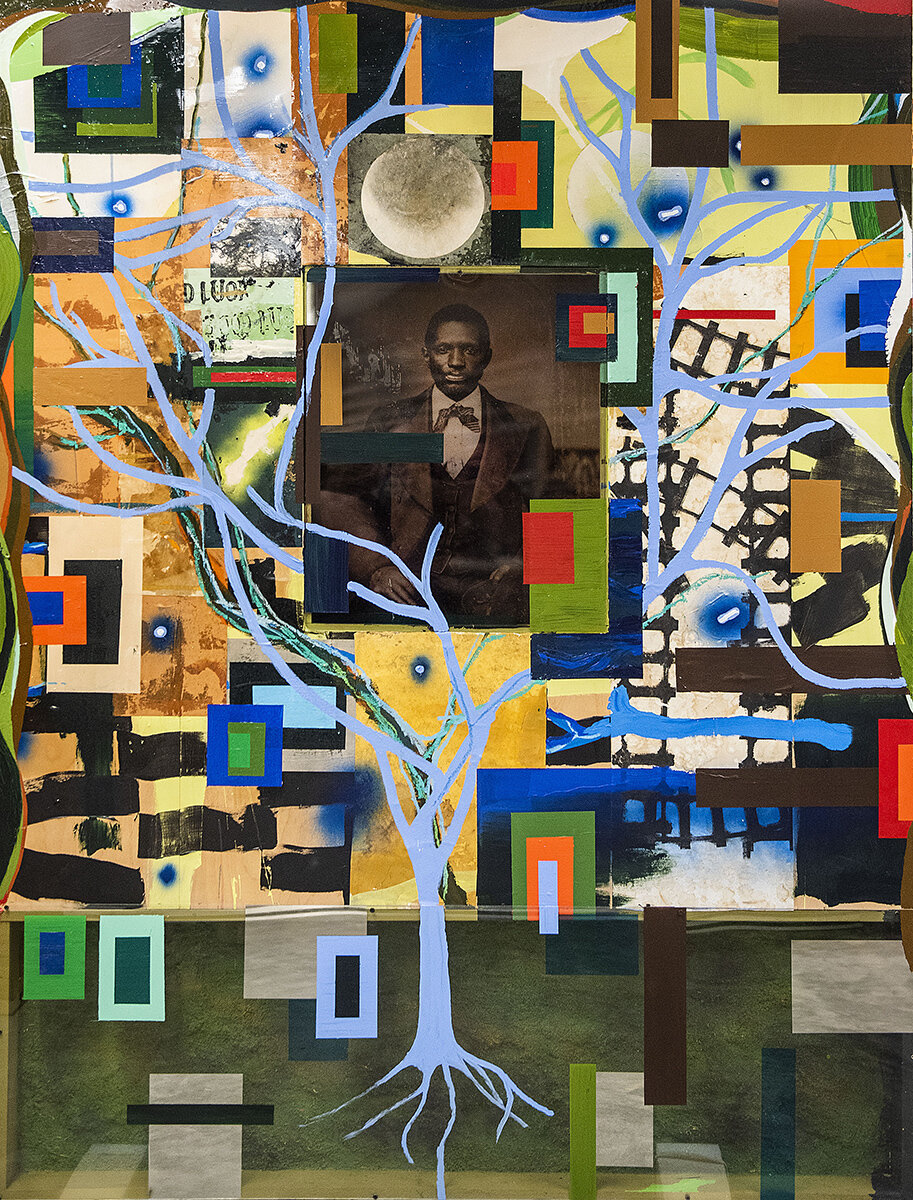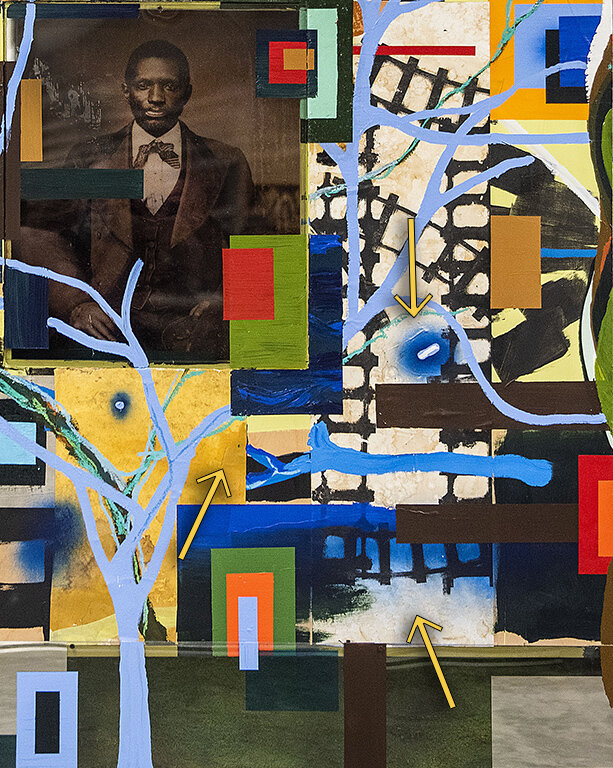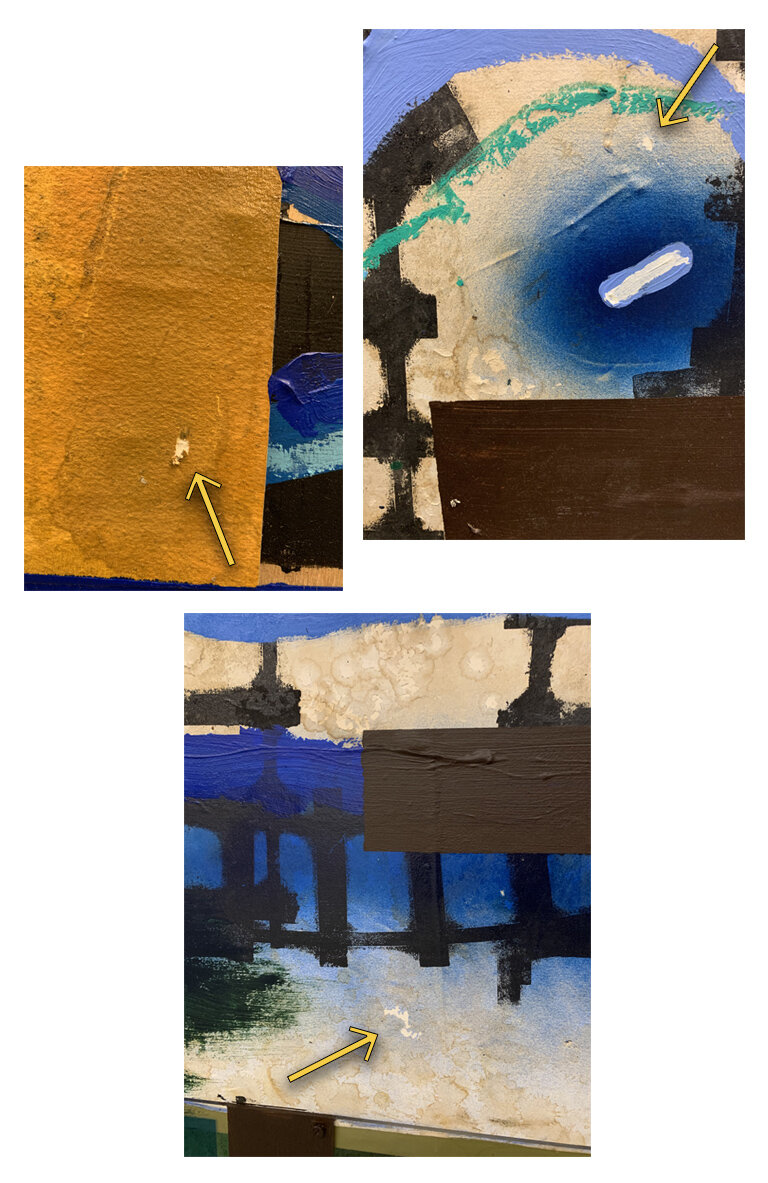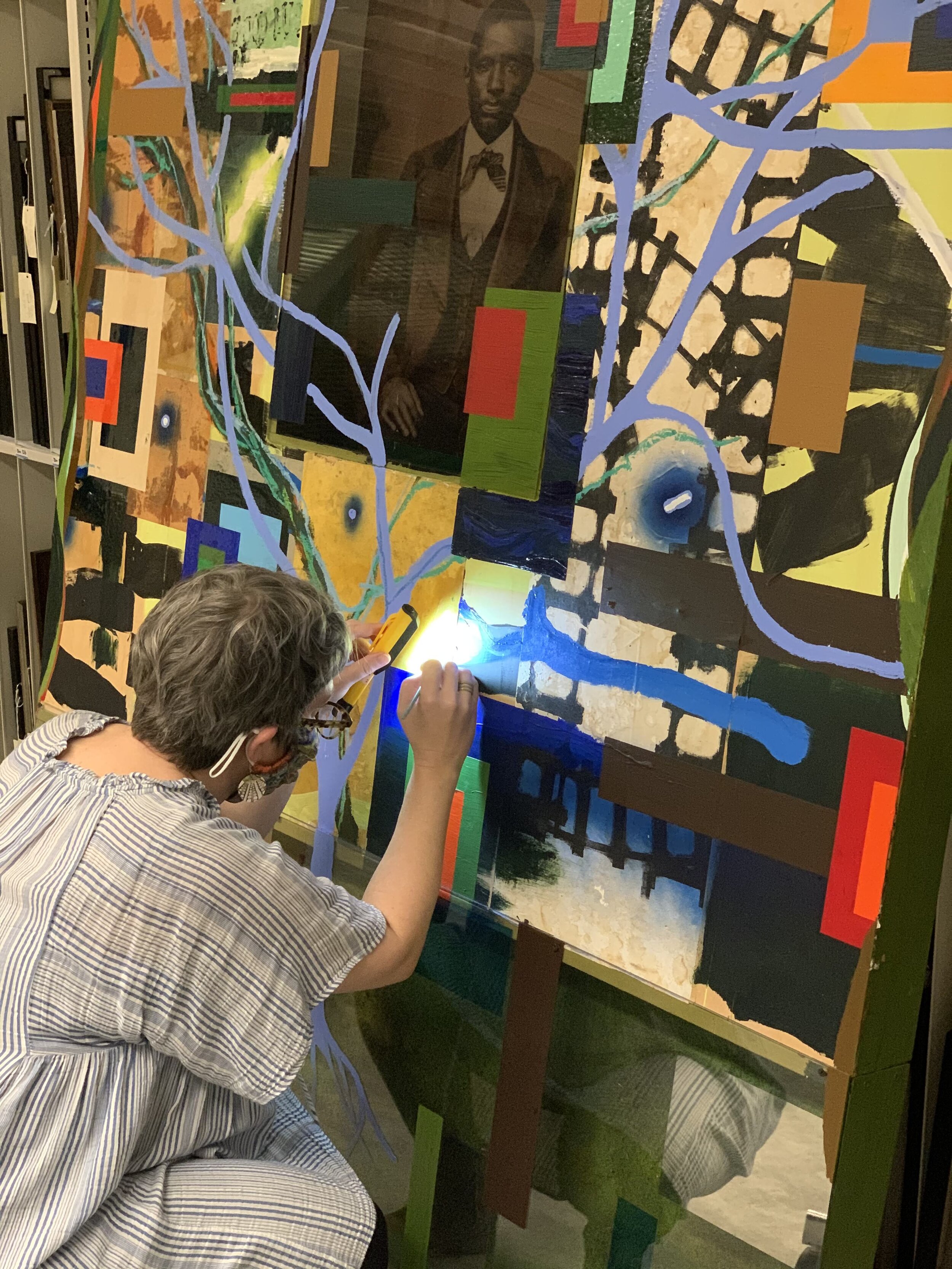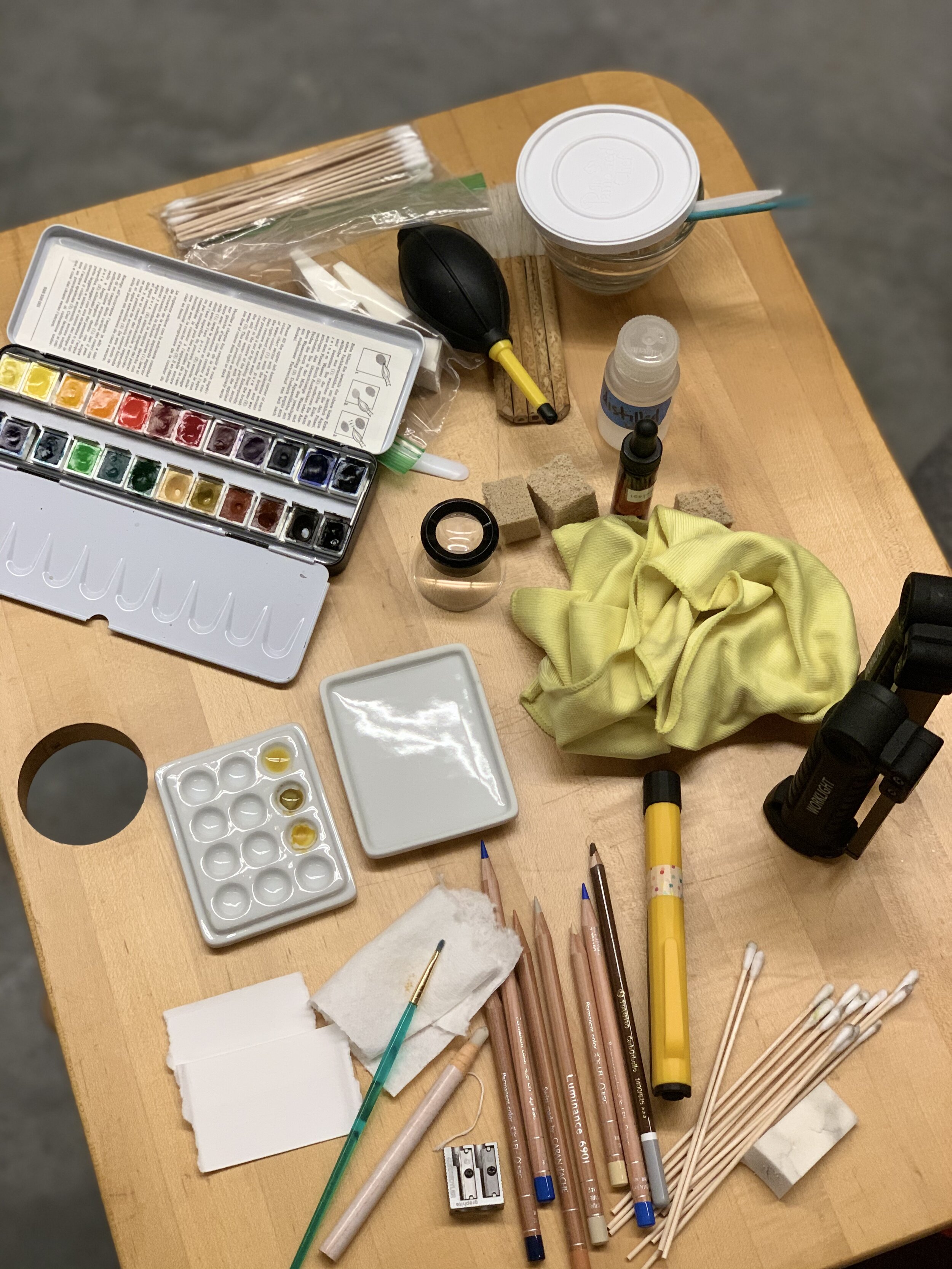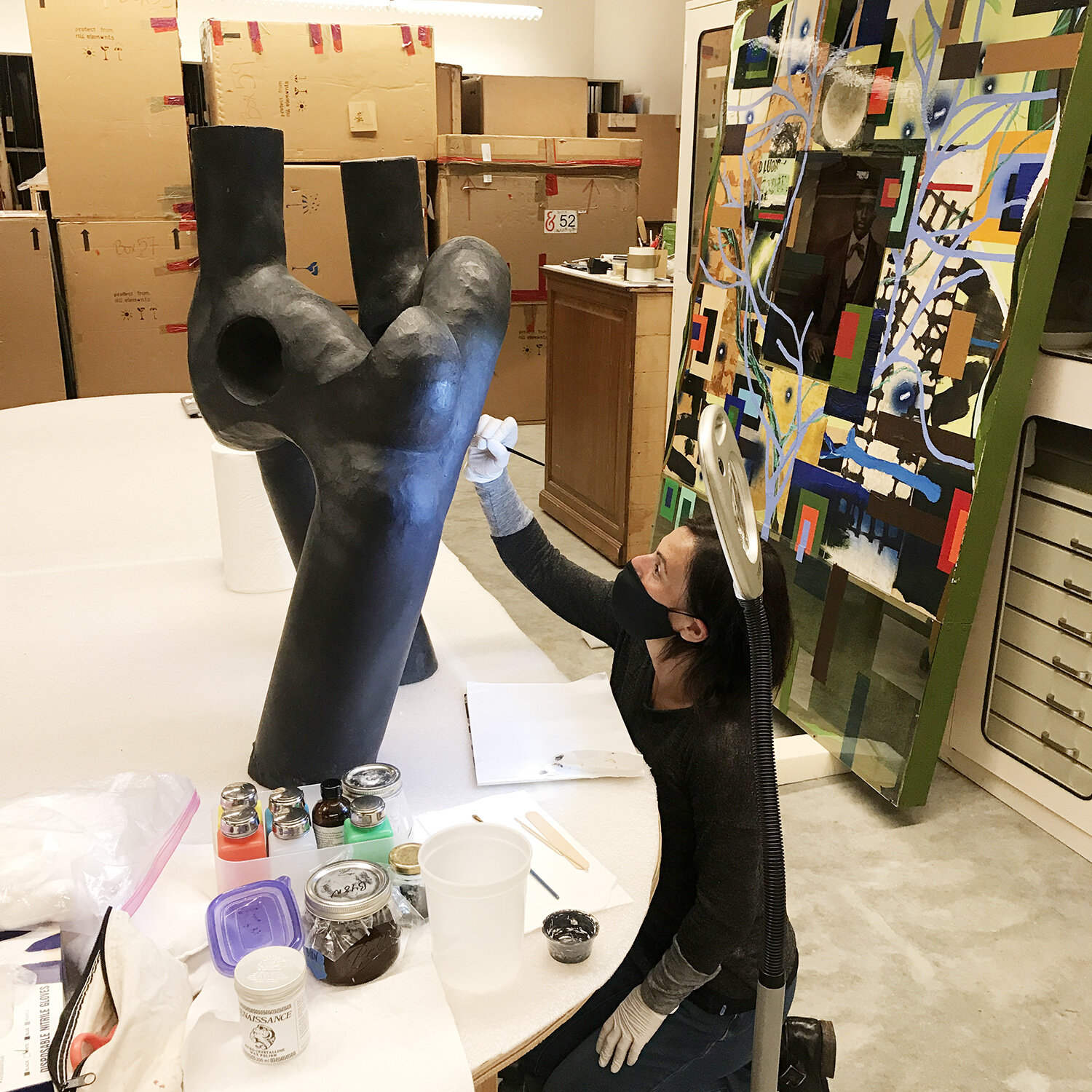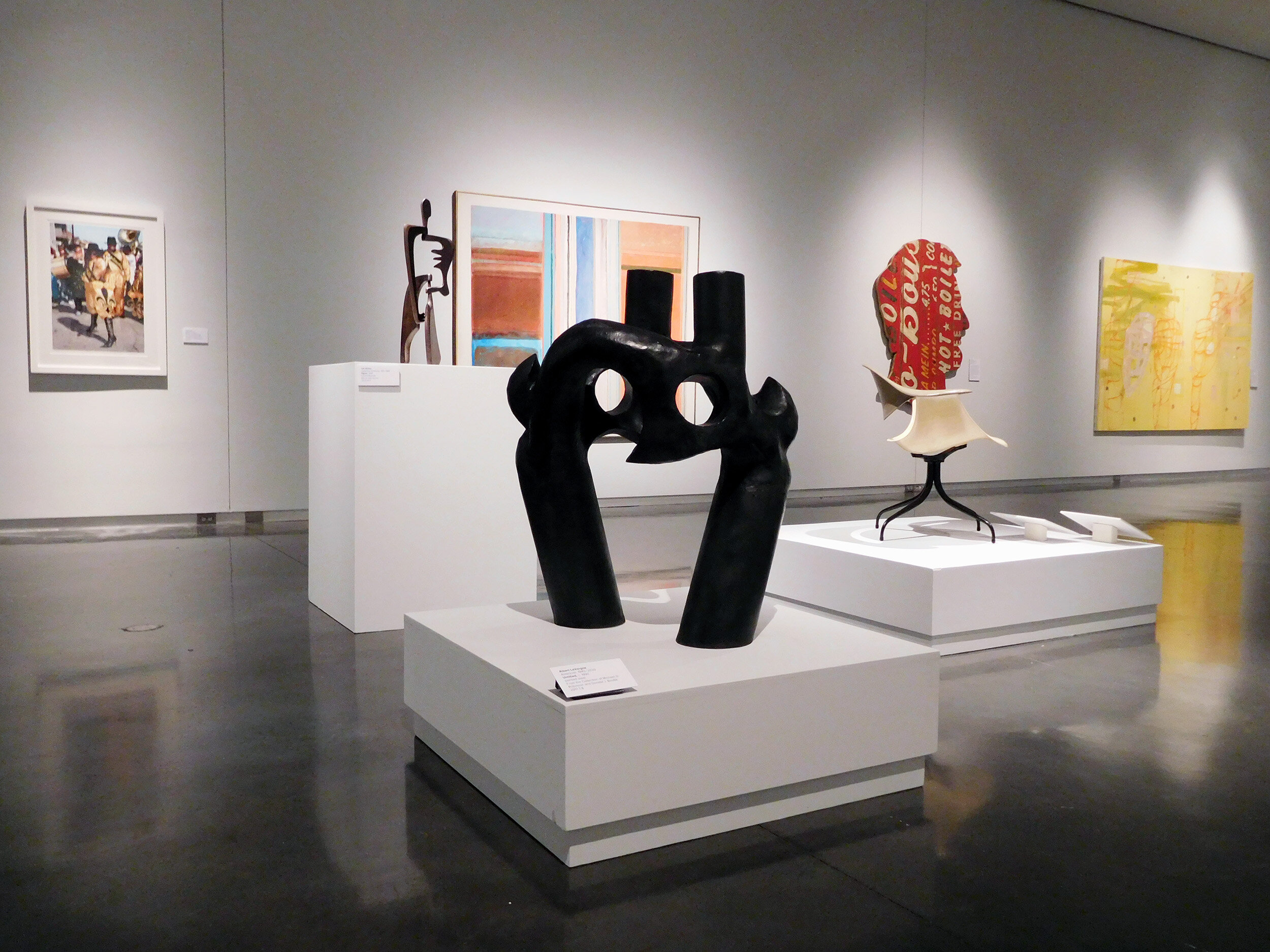As museum professionals, a huge part of our jobs are to make exhibits look seamless, effortless, and as perfect as possible. A crisp and clean display opens the door for visitors to fully immerse themselves in an artwork rather than be distracted by a crooked painting or chipped and scuffed pedestal. So as a visitor, you hopefully don’t realize all the work that goes in to making an artwork itself look effortless and perfect (in its own way), too!
When an artwork is damaged or some type of natural decay has occurred, we call upon highly trained and skilled conservators to stabilize or restore an artwork so that it can be displayed. Oftentimes when the museum acquires an artwork it may have already incurred damage in its life, especially if it has been well-loved in a collector’s home. In preparation for Collection Spotlight: Recent Acquisitions by Black Artists, LSU MOA enlisted the skills of two specialized conservators to repair Far Beyond the Valley by Radcliffe Bailey (on view in Collection Spotlight) and an Untitled sculpture by Al LaVergne (on view in Art in Louisiana’s Modern and Contemporary gallery).
IMAGE: LSU MOA Executive Director Daniel E. Stetson (left) and LSU MOA Curator Courtney Taylor (right) showing LSU MOA Collections Chair Ben Jeffers (middle) Radcliffe Bailey’s Far Beyond the Valley in LSU MOA Collections Storage. Image provided by photographer Jordan Hefler for inRegister Magazine
Repairing Radcliffe Bailey's Far Beyond the Valley
Far Beyond the Valley is comprised of many layered sheets of paper and other media, some of it “found,” meaning the paper may have already had stains or abrasions before it was applied to the artwork. This makes differentiating the artist’s intentions from actual damage all the more challenging.
Two areas stood out as clearly unintentional, however—can you spot them in the photos below? The yellow arrows point to areas restored and damage.
Paper Conservator Tish Brewer traveled from her lab in Dallas to repair these pulls and abrasions for us. Tish consolidated the areas of missing paper by reattaching the paper with a seaweed paste, then toned or blended those repairs into the work using colored pencils and thin layers of watercolor. She also gave the whole work a deep dusting, revealing the shine and sparkle of the high gloss and glitter.
Repairing Al LaVergne's Untitled Sculpture
Al LaVergne’s biomorphic sculpture had a similar story—paint had flaked off in various areas and was flaking and unstable in others, and the whole work was dusty, dirty, and had generally lost its luster. Objects Conservator Susie Anders is local to Baton Rouge and worked on this sculpture in museum storage.
Susie consolidated areas of missing and unstable paint with a special polymer, then toned those areas with conservation paints. She gave the whole sculpture a deep clean, then applied a glossy wax. The sculpture looks beautiful and renewed and, more importantly, is now stable from further flaking in the near future.
Without the work of these highly skilled professionals, damage to these artworks would have been distracting to the visitor, and wrongly conveyed a lack of care for our collection objects. So next time you meet one, thank a conservator for helping make your art-viewing experience effortless!
Written by Olivia Peltier, LSU MOA Registrar


